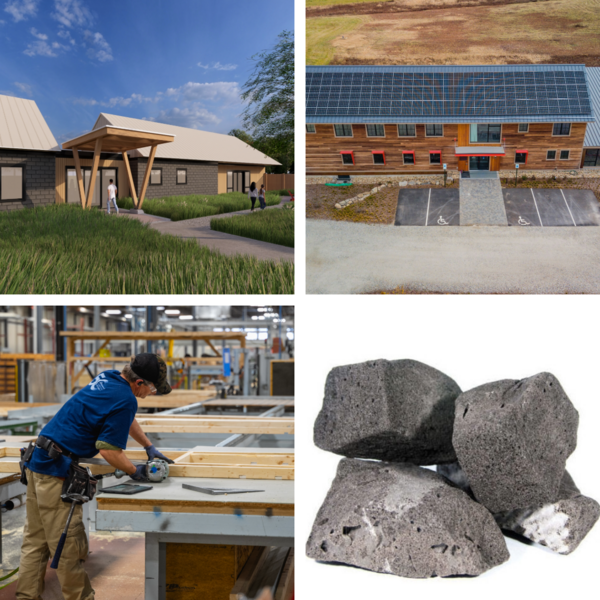The Monadnock Conservancy has embarked on a journey to increase staffing and build a new, permanent headquarters in downtown Keene! We are making a lot of progress: We have hired for two of the four positions needed (stay tuned for more information on the staffing piece) and have broken ground on the headquarters. At every step of the building process, our construction team is focused on how to ensure this space meets the highest standards of sustainability.
We asked the team at SP Architects to highlight a few of the ways this new space will conserve energy, both in construction and operation. Here are just a few!
Sustainable construction: Tektoniks System
Bensonwood Homes will employ their unique construction process, known as Tektoniks, to reduce the energy it takes to construct, and run, this building. Tektoniks is a process by which wood-framed wall and ceiling panels are fabricated off-site in a controlled factory environment, including the installation of the cellulose insulation and windows, which reduces material waste and ensure quality control when installing air-barrier systems.
Sustainable operation: Solar PV system
The Conservancy’s headquarters will employ a Solar PV system, similar to the system installed at the Southeast Land Trust headquarters in Epping.
The Conservancy’s new headquarters will use virtually no fossil fuels to operate The building will use an air source heat pump system for heating and cooling, which uses the newest technologies to reduce the impact of refrigerants. The building will also feature a Solar PV (photovoltaic) system, designed to meet the entire energy needs of the building, making it officially a Net Zero or Net Positive Project!
Sustainable materials: Glavel
Insulation – be it spray or foam board – requires a lot of carbon to produce. Enter Glavel, a glass-based product that replaces foam board insulation, high density foam blocks, and other lightweight fill materials in construction and industrial applications. By choosing Glavel instead of other types of foam insulation, we will reduce our carbon footprint with an environmentally safe alternative to the carbon intensive materials traditionally used for subslab insulation and lightweight structural fill.
